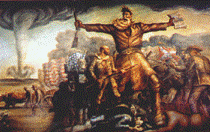History, Department of

James A. Rawley Graduate Conference in the Humanities
Date of this Version
April 2008
Document Type
Article
Abstract
In January of 1888, the residents of Nebraska, Dakota Territory, Montana, Kansas, Wyoming, and even Iowa, Minnesota, and Texas were faced with a snowstorm unlike any they had seen before. Striking the majority of the region at the time school was dismissed, many students and teachers were caught long distances from home as the temperature dropped well below zero and visibility diminished. Striking the majority of the region at the time school was dismissed, it has become known as The Schoolchildren’s Blizzard. The disaster was forever ingrained in the minds of those who lived through it. By exploring different perspectives, a transformation of this storm and memory surfaces, fueled in large part by the attention newspapers put on school teachers at the time.
As a prominent institution on the Plains beginning in the middle-to-late 1800s, rural schools stood as a visualization of settlers’ commitment to education. Frequently consisting of one room, ideas of these buildings standing alone on the prairie give this educational tradition a romanticized image. The school systems, teachers, and students show a more complex and organized system, however, from which analyses of gender and class can be attained to show how they were perceived in local newspapers when their role of authority was put to the test during the January 12, 1888 blizzard.


Comments
Paper presented at the 3rd Annual James A. Rawley Conference in the Humanities — Imagining Communities: People, Places, Meanings. Lincoln, Nebraska, April 12, 2008. Sponsored by the University of Nebraska–Lincoln History Graduate Students’ Association. Copyright © 2008 Heather Stauffer.